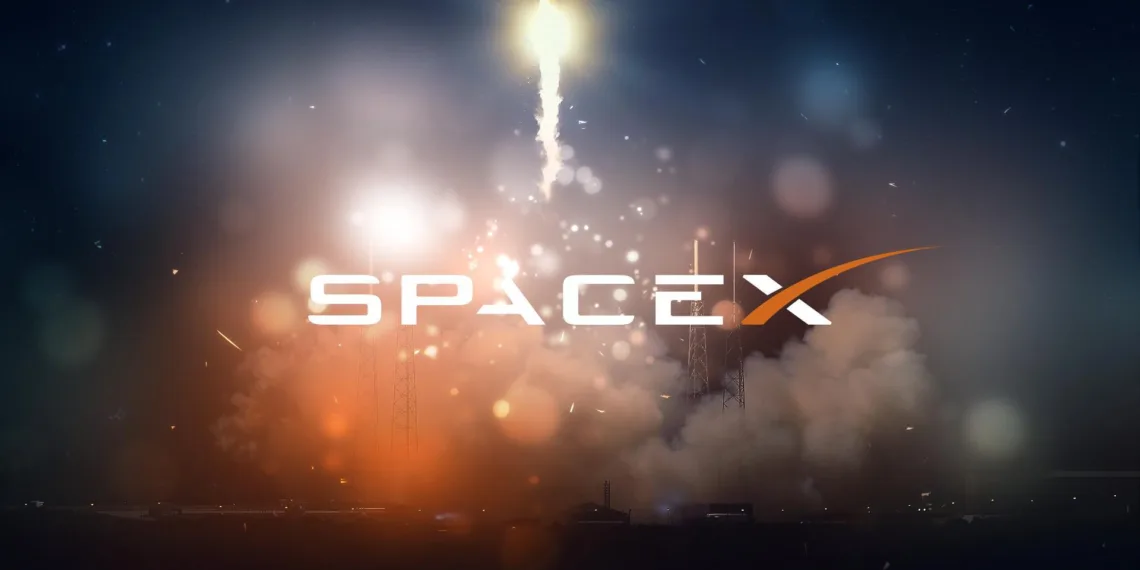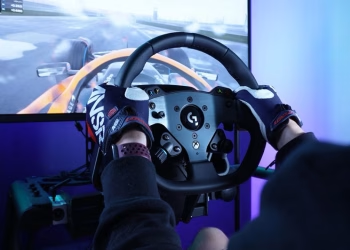Early on Friday morning Space Exploration Technologies Corp. (SpaceX) launched its third crew of astronauts to the International Space Station (ISS), reusing a Crew Dragon space capsule to fly humans for the first time. The mission, dubbed Crew-2, will add four more astronauts to the ISS while being the latest flight under NASA’s Commercial Crew Program.
At 5:49 AM ET from Cape Canaveral, Florida, a used Falcon 9 rocket (last flown for SpaceX’s Crew-1 mission last year) lifted off carrying Endeavour, the same Crew Dragon capsule that nearly a year ago, first launched SpaceX’s debut astronaut mission.
“Off the Earth, for the Earth, Endeavour is ready to go,” Shane Kimbrough, NASA astronaut and the mission’s spacecraft commander, told SpaceX mission control in Hawthorne, California minutes before lifting off.
Kimbrough and fellow NASA astronaut Megan McArthur, serving as the pilot, accompanied mission specialists Thomas Pesquet, a French aerospace engineer from the European Space Agency (ESA), and Akihiko Hoshide of the Japan Aerospace Exploration Agency (JAXA), combine to form SpaceX’s most diverse NASA-managed crew yet. The crew will spend nearly a complete day in transit as Endeavour autonomously raises its orbit toward the orbital space station ahead of a 5:10 AM ET docking on April 24th.
/cdn.vox-cdn.com/uploads/chorus_image/image/69173974/1313993125.5.jpg)
Roughly 12 minutes after the pre-dawn liftoff, sunlight entered the windows of Crew Dragon Endeavour as it detached from its Falcon 9 second stage booster, prompting cheers and applause from engineers on a live video feed in SpaceX’s mission control. “Thanks for flying our first flight-proven, crewed Falcon 9,” mission control said to the Endeavour crew, confirming a successful arrival in orbit.
“THE RIDE WAS REALLY SMOOTH”
“We’re great, glad to be back in space for all of us, and we’ll send our regards to Crew-1 when we get there,” Kimbrough, seen on live camera feeds from inside Crew Dragon, replied from Endeavour, according to The Verge. A microgravity indicator, here, a stuffed penguin toy, arose from under the astronauts’ seats once they reached orbit. The capsule’s separation occurred just after Falcon 9’s first stage booster returned back to Earth to land on SpaceX’s drone-ship “Of Course I Still Love You” in the Atlantic Ocean.
“We had an incredible launch,” Kimbrough said from Crew Dragon, as the spacecraft orbited Earth over South Africa. “That was pretty special to see the sunlight coming in shortly after liftoff.” McArthur said “the ride was really smooth … We couldn’t have asked for anything better. There may have been some hootin’ and gigglin’ up here” during ascent, she added.
When Crew Dragon was inserted in its orbit, Kimbrough said the crew rushed to look out of the capsule’s windows to see the Falcon 9 second stage “pretty much flying in formation with us” after separating.
US-EUROPE-SPACEX-SPACE
:no_upscale()/cdn.vox-cdn.com/uploads/chorus_asset/file/22464316/1232473605.jpg)
The four astronauts will spend six months in space and join seven other astronauts that are already aboard the ISS. Another event occurring right after is that four other astronauts from SpaceX’s Crew-1 mission, which launched to the ISS, an orbital science laboratory flying more than 17,000 miles per hour in orbit roughly 250 miles above Earth, on November 15th, 2020, will board a separate Crew Dragon capsule April 28th and return to Earth to cap their own six-month stay.
THE CREW-2 MISSION MARKED ANOTHER REUSABILITY MILESTONE FOR SPACEX
Crew-2 marks the American aerospace manufacturer’s third astronaut mission under NASA’s Commercial Crew Program. This program is NASA’s public-private initiative to revive its human spaceflight capabilities after dependence on Russian rockets for nearly 10 years. Under the program, SpaceX is contracted to fly six operational missions (this was the second) for which the company was awarded $2.6 billion in 2014 to develop and fly Crew Dragon. Its first crewed mission in May 2020, carrying Bob Behnken and Doug Hurley, counted as a test flight.
For SpaceX, which has launched and reused dozens of Falcon 9 rockets and uncrewed Dragon capsules in the past, the Crew-2 mission marked another reusability milestone. A Falcon 9 rocket and Crew Dragon capsule was reused for the first time under this mission for flying humans, a capability NASA approved as a modification to SpaceX’s contract last year. A huge amount of time and money of both parties was spared that otherwise would’ve been spent building new capsules for each mission.
According to the Verge, “the Endeavour capsule went through light refurbishment at SpaceX’s facilities in Cape Canaveral — nicknamed “Dragonland” — after splashing down in the Gulf of Mexico last year with Hurley and Behnken inside. Most of the hardware on the capsule remained, but its thermal shielding, parachutes, and some internal fuel valves were swapped for new ones.”
“IT’S LIKE A PARTY UP THERE”
During their stay at the ISS, the crew will conduct an array of microgravity science experiments. The Crew-2 astronauts’ science efforts will center on a cassette-sized device containing human cells to study how those cells respond to various drugs and health conditions in microgravity.
The increased crew size means other science experiments, including a few projects tracking the growth and behavior of plants in space, will also see some progress. “It’s like a party up there,” said Annmarie Eldering, a project scientist at NASA’s Jet Propulsion Laboratory working on Orbiting Carbon Observatory-3, a device astronauts will use to measure carbon dioxide in Earth’s atmosphere. “When you get all those measurements from space, in the same time, same place, it’s really powerful for science,” Eldering said Friday morning in a live NASA broadcast.








